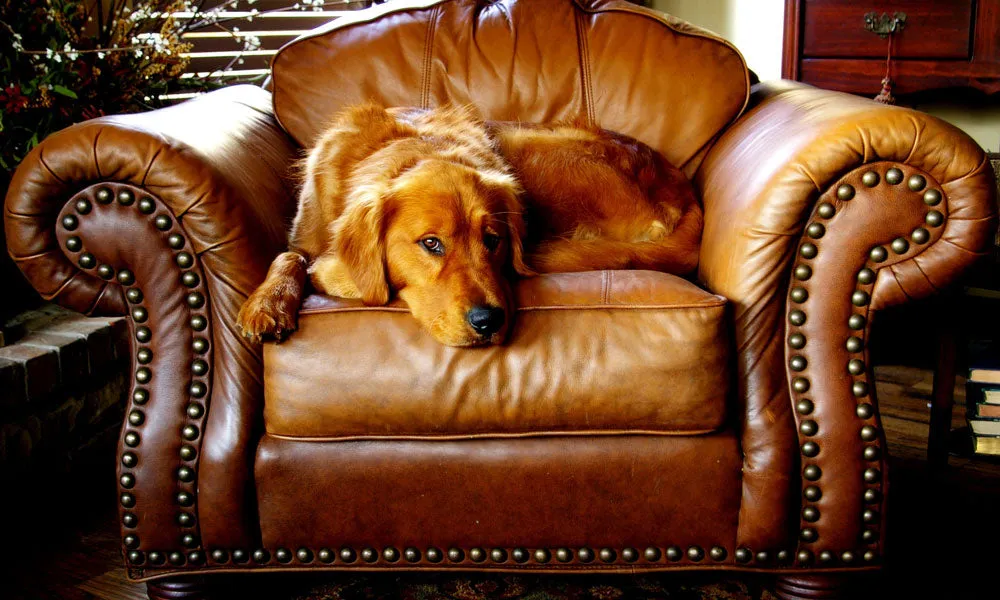For many dog owners, the sound of their beloved canine companion howling can be a heartwarming display of emotion. However, when that howling occurs persistently when you’re away from home, it quickly transforms from charming to a source of concern for both your dog’s well-being and your neighbours’ peace. This article will delve into effective strategies and practical tips on How To Stop A Dog Howling When You Go Out, addressing the root causes and providing actionable solutions.
Like many, I experienced this firsthand with my own dog, a lockdown puppy who spent his formative year constantly by our side. Though I take him to work and holidays, he’s left alone occasionally. Hearing his mournful howls from the car or receiving a neighbour’s concerned message about his continuous vocalizations was mortifying. It quickly became apparent that this wasn’t just a nuisance; it was a clear sign of distress, anxiety, and confusion for him. My dog, who typically sleeps all day when I’m around, was clearly awake and anxious in my absence, often utterly exhausted upon my return. Understanding this underlying distress is the first step toward finding solutions and ensuring our dogs are comfortable and calm when left alone. Many of these behaviors stem from common behavior issues in dogs that can be addressed with patience and the right techniques.
Understanding Why Dogs Howl When Left Alone
Dogs howl for a variety of reasons, often rooted in their ancestral instincts and pack mentality. When left alone, howling can be a form of communication, a way to call out to their “pack” (you) that has seemingly disappeared. It’s often a symptom of separation anxiety, a condition where dogs experience extreme stress when parted from their primary attachment figure. Other causes can include boredom, fear of external noises, or even underlying medical issues. Recognizing the specific trigger for your dog’s howling is crucial for applying the most effective remedy.
7 Effective Tips to Stop Your Dog from Howling When You Go Out
Addressing your dog’s howling requires a multi-faceted approach, combining exercise, training, and environmental adjustments. Here are seven proven tips to help quiet your canine companion when you’re not home.
1. Ensure Ample Exercise and Mental Stimulation
A tired dog is indeed a content dog. Before heading out, make it a priority to provide your canine companion with plenty of physical exercise to burn off any excess energy. Activities like brisk walks, running, or a vigorous game of fetch can significantly reduce anxiety and restlessness. Physical exertion helps to release endorphins, naturally calming your dog. In addition to physical activity, mental stimulation is equally vital. Puzzle toys, treat-dispensing gadgets such as a Kong or a Lickimat, can engage your dog’s mind, preventing boredom and the anxiety that often leads to howling. These enrichments can keep them occupied and focused on a task, rather than on your absence.
 A sad-looking Whippet dog resting its head on a person's leg
A sad-looking Whippet dog resting its head on a person's leg
2. Implement Gradual Departures and Calm Arrivals
Dogs often associate your departures and arrivals with intense emotional shifts, which can escalate their anxiety and trigger howling. To counteract this, desensitize your dog to these cues. Start by practicing very short departures, leaving for just a few minutes and then returning calmly. Gradually increase the duration of your absence over time. Similarly, when you return home, resist the urge to lavish immediate attention. Instead, wait until your dog is calm and composed before greeting them. This teaches your pet that your absence is temporary, and your return is a normal, non-eventful part of their day, reducing the emotional rollercoaster associated with your coming and going. This approach can also be helpful when you want to bell for dog to ring to go out, creating a calm association with door routines.
3. Create a Secure and Comforting Safe Space
Establishing a designated safe and comfortable area for your dog can significantly alleviate anxiety and diminish howling. Choose a specific spot, such as a cozy crate, a quiet corner, or a comfortable dog bed, where your dog can retreat to when feeling stressed or lonely. Enhance this space with familiar scents, soft bedding, and engaging interactive toys. A safe haven provides security, a sense of belonging, and a predictable environment, minimizing the urge to howl out of fear or separation anxiety. It should be a place where they feel completely secure and undisturbed.
 A dog with a brown and black coat sitting and howling
A dog with a brown and black coat sitting and howling
4. Utilize Counterconditioning Techniques
Counterconditioning is a powerful technique designed to alter your dog’s emotional response to specific triggers, such as your departure. The goal is to replace negative associations with positive ones. For instance, before you leave, provide your dog with a special, high-value treat that they only receive when you’re about to go, or engage them in a fun, short game. Over time, your pet will begin to associate your departure with something pleasant and rewarding, rather than something negative or fear-inducing. This positive association can significantly reduce anxiety and, consequently, the likelihood of howling.
5. Introduce Calming Music or White Noise
Music therapy has been shown to have positive effects on canine behavior, actively reducing stress and anxiety. Playing calming music or white noise when you’re away can help create a soothing auditory environment for your dog. Consider classical, reggae, or specially composed dog relaxation music. The continuous, consistent sound helps to mask jarring external noises that might otherwise trigger anxiety or alertness, creating a familiar and secure ambiance that makes your dog feel more at ease and less inclined to howl. This can also be a useful strategy for how to stop puppy barking at night.
 A Beagle dog with a happy expression and floppy ears
A Beagle dog with a happy expression and floppy ears
6. Consider Professional Behavior Modification Training
If your dog’s howling is persistent and severe despite your best efforts, enrolling them in behavior modification training can be highly beneficial. Consulting a professional certified dog trainer or a veterinary animal behaviorist is crucial. They can accurately identify the underlying root cause of the howling, which might be more complex than simple separation anxiety, and develop a personalized training plan. Trainers can implement advanced techniques such as systematic desensitization, positive reinforcement, and reward-based training to effectively modify your dog’s behavior and reduce or eliminate howling. They can also offer guidance on cool things to train your dog beyond basic obedience, channeling their energy positively.
7. Seek Veterinary Assistance When Necessary
It is vital to consult a veterinarian if your dog’s howling persists or worsens, especially if accompanied by other behavioral changes. Excessive vocalization can sometimes be a symptom of underlying medical conditions, pain, or discomfort that may not be immediately obvious. A thorough veterinary examination can rule out any health issues and provide valuable guidance on additional steps to manage the howling effectively. In some cases, your vet might recommend specific medications, supplements, or refer you to a veterinary behaviorist who can offer specialized treatment plans. Addressing potential physical ailments is a crucial part of holistic dog care and ensuring their overall well-being.
 A Golden Retriever dog running happily on a beach with water splashing
A Golden Retriever dog running happily on a beach with water splashing
Successfully stopping your dog from howling when you go out requires patience, consistency, and often a combination of these strategies. From ensuring they get adequate exercise to providing a safe space and considering professional help, each step contributes to your dog feeling more secure and content in your absence. My personal journey with my own dog continues, and I’m optimistic about the positive changes these tips will bring. If you’re dealing with a similar situation, remember that understanding your dog’s needs and providing a structured, loving environment are key to fostering a calmer, happier companion. We encourage you to try these methods and share your progress, or any additional tips you’ve found effective, in the comments below.
